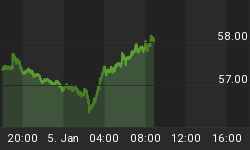Almost eight years after the bankruptcy filing of Lehman Brothers and the first of many central bank quantitative easing programs, it appears the expansion - the weakest on record by several measures - is petering out. The Q2 growth rate of GDP was 1.2% annualized, meaning that the last three quarters were +0.9%, +0.8%, +1.2%. That's not a recession, but it's also not an expansion to write home about.
But why? Why after all of the quantitative easing? Is the effectiveness waning? Is it time for more?
I read recently about how many economists are expecting the Bank of England to increase asset purchases (QE) this Thursday in an attempt to counteract the depressing effects of Brexit on growth. Some think the increase will be as much as £150 billion. That's impressive, but will it help?
I also read recently about how the Bank of Japan "disappointed investors" by not increasing asset purchases except incrementally. The analysts said this was disappointing because the BOJ's action was "not enough to cause growth."
That's because no amount of money printing is enough to cause growth. No amount.
It seems like people get confused with this concept, including many economists, because we use units of currency. So let's try illustrating the point a different way. Suppose I pay you in candy bars for the widgets you produce. Suppose I pay you 10 candy bars, each of which is 10 ounces, for each widget. Now, if I start paying you 11 candy bars instead of 10, then the price has risen and you want to produce more widgets, right? This, indirectly, is what economists are thinking when they think about the effect of monetary policy.
But suppose that I pay you 11 candy bars, but now each candy bar is 9.1 ounces instead of 10 ounces? I suspect you will not be fooled into producing more widgets. You will realize that I am still paying you 100 ounces of candy per widget. You are not fooled by the fact that the unit of account changed in intrinsic value.
Now, when the central bank adds to the money supply, but doesn't change the amount of stuff the economy produces (they don't have the power to direct production!), then all that changes is the size of the unit of account - the candy bar, or in this case the dollar - and the number of dollars you need to buy a widget goes up. That's called inflation. And the only way that printing more money can cause production to increase is if you don't notice that the value of any given unit of currency has declined. That is, only if I say I'm paying you 11 candy bars - but you haven't noticed they are smaller - will you respond to the change in terms. This is called "money illusion," and it is why money printing does not cause growth in theory...and, as it turns out, in practice.[1]
There is nothing terribly strange or unpredictable about what is going on in global growth in terms of the response to monetary policy. The only thing strange is that eight years on, with numerous observations on which to evaluate the efficacy of quantitative easing, the conclusion appears to be that it might not be quite as effective as policymakers had thought. And therefore, we need to do lots more of it, the thought process seems to go. But anything times zero is zero. Central banks are not shooting an inaccurate, awkward weapon in the fight to stimulate growth, which just needs to be fired a lot more so that something eventually hits. They are shooting blanks. And no amount of shooting blanks will bring down the bad guy.
[1] I address this aspect of money, and other aspects that affect inflation, in my book What's Wrong With Money: The Biggest Bubble of All.
You can follow me @inflation_guy!
Enduring Investments is a registered investment adviser that specializes in solving inflation-related problems. Fill out the contact form at http://www.EnduringInvestments.com/contact and we will send you our latest Quarterly Inflation Outlook. And if you make sure to put your physical mailing address in the "comment" section of the contact form, we will also send you a copy of Michael Ashton's book "Maestro, My Ass!"















